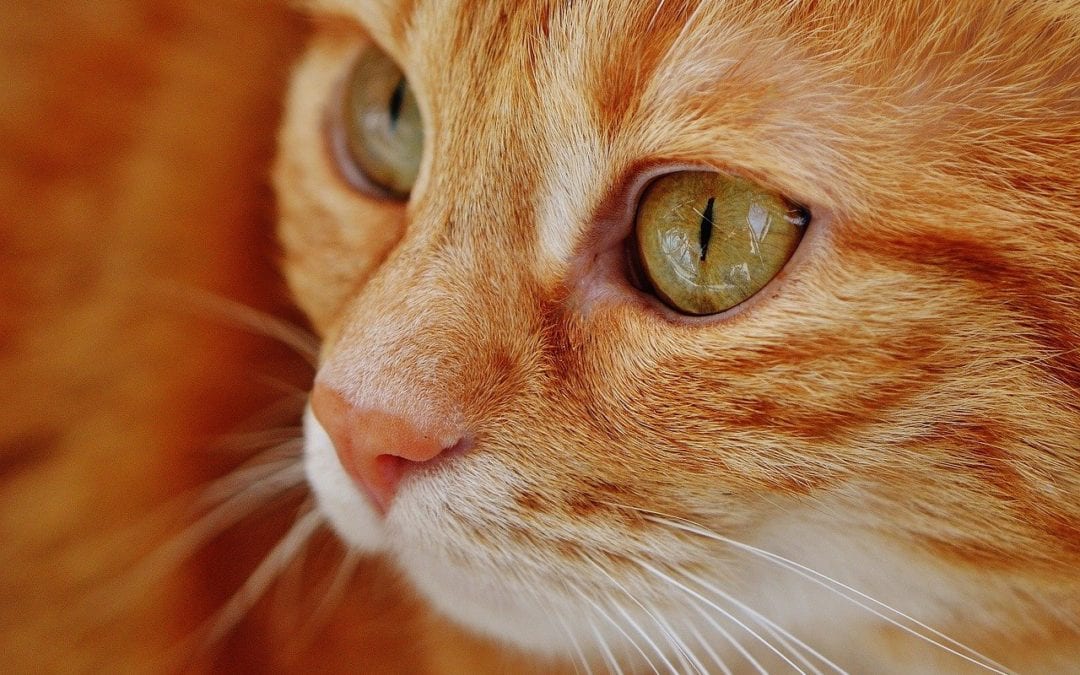Your pet’s eyes are sensitive and can easily succumb to injury or disease, but with proper care, hygiene, and close monitoring, you can help your furry pal keep their 20/20 vision well into their golden years.
What are common eye problems in pets?
Pets can suffer from all manner of eye conditions—some hereditary, some caused by trauma or infection, and some caused by old age. The most common eye problems in pets include:
- Keratoconjunctivitis sicca (KCS) — KCS, or dry eye, is a disease that occurs when the tear gland produces too few tears to adequately lubricate the eye. This often causes excess mucoid discharge, redness, cloudiness, and sometimes squinting.
- Corneal ulcers — The cornea is the clear “windshield” of the eye and may be damaged by trauma, resulting in corneal ulcers. Common causes of trauma include eyelid abnormalities (tumors, hairs contacting the eye), thorns, claws, and other foreign objects. In many cases, dry eye predisposes to corneal ulcers and may even prevent timely healing.
- Cherry eye — In addition to the two visible eyelids, your pet has a third eyelid that typically hides from view in the inner corner of the lower eyelid. The third eyelid contains a tear-producing gland that may herniate out of place. This is both unsightly and damaging to the surface of the eye.
- Cataracts — The lens located within the eye can develop a cloudy, opaque cataract that interferes with vision. This condition is a commonly overlooked cause of other ocular diseases, like glaucoma.
- Glaucoma — This painful diseases of elevated pressure within the eye may occur from genetic or breed-related influences as well as many pre-existing diseases like cataracts, uveitis, lens luxation, and retinal disease.
- Uveitis — An inflammatory process within the eye that causes pain, cloudiness, redness, and impaired vision. Uveitis may be caused by many infectious, cancerous, and immune-mediated processes. In most cases, prompt diagnosis and appropriate intervention is key to management success.
What are eye problem signs in pets?
If your pet develops an eye problem, their ocular health can rapidly deteriorate. At the first hint of one of the following signs, contact our team:
- Squinting
- Redness
- Cloudy appearance
- Excess discharge (watery, mucoid, of puss-like)
- Vision deficits
- Rubbing or pawing at the eyes
- Third eyelid prominence
How can I keep my pet’s eyes healthy?
Many pets, whether young or old, develop problems with their eyes. With the wide array of congenital, hereditary, infectious, cancerous, and age-related conditions that arise, you can take steps to ensure your pet’s issues do not go overlooked.
- Regular comprehensive evaluation by a board-certified veterinary ophthalmologist in animals predisposed to ocular diseases.
- Annual examinations with your primary care veterinarian will often allow prompt recognition of ailments, including those of the eye.
- Routine monitoring at home for the signs of eye problems listed above.
- Remove hanging hair from around your pet’s eyes with blunt-tipped scissors
- Remove mucus and eye discharge from your pet’s eyes with a warm, damp washcloth
Good days start with great vision and we can help! Please contact us to schedule an appointment!

